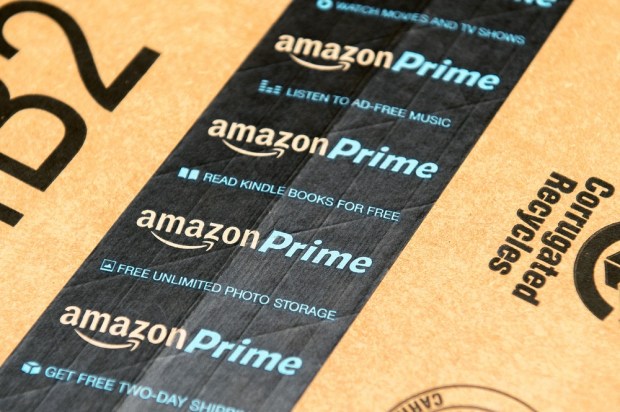Amazon Vs. Everyone: The Latest Challengers Step Up

The challengers, they keep on taking their shots …
The never-ending quest by retailers to put up a stronger fight against Amazon made news in recent days, in some cases indirectly, but still noteworthy.
First, Target expanded its curbside pickup service to California and Colorado. Customers can order products through Target’s app and drive to the store, where employees deliver the goods to their cars. Orders are usually ready within an hour after customers place them.
Target is already experiencing a 10 percent rise in orders with the new service, which has been particularly popular with families, as diapers and household supplies are top sellers. The service could give the chain more fuel in its competition against Amazon, along with other big-box rivals.
Brick-and-Mortar Edge
Speaking of those rivals — Walmart, also engaged in a high-stakes struggle with Amazon, could in fact have an “underrated edge” because of its big brick-and-mortar network of stories, according to former Walmart CEO Bill Simon. “The question and the challenge for Walmart is, can [it] redefine [its] play into more of an omnichannel play than Amazon? Because that’s an advantage for [it],” he said.
The comments came amid a 10 percent year-over-year increase in the chain’s same-store sales in the second quarter.
Meanwhile, grocery startup Boxed said this week that it has raised $111 million in a new round of funding. The company sells such bulk items as toilet paper and pet food, and then delivers those orders directly to consumers. The company has an average customer order amount of $100 and average order size of 10 items.
Boxed does not offer the broad challenge to Amazon that retail chains do, but it could least poke the eCommerce operator in the side. That’s because when compared to Amazon, Boxed offers fewer products, and items in bulk sizes. As a result, the company uses less space and manpower in filling more orders.
Of course, none of this is meant to suggest that Amazon offers major vulnerabilities to competitors — though India does offer a recent example of how the eCommerce operator is having to fend off rivals, including (but certainly not limited to) Walmart. And some retailers would rather join Amazon, in a sense, than try to beat it.
Earlier this month, for instance, Kohl’s said it had expanded its partnership with Amazon, launching Amazon return stations throughout its Milwaukee stores. Kohl’s last year began selling Amazon goods on its shelves — including the Echo, powered by Amazon’s Alexa, and the Fire tablet line — which in turn enabled Kohl’s to accept Amazon returns at some of its U.S. stores. The Amazon return service is now offered in more than 100 Kohl’s locations.
Lack of Emotion
That said, every organization has weaknesses, and that applies to Amazon. Its “Achilles heel” is emotion, according to George Colony, CEO of Forrester Research. “The company delivers, but its customers don’t feel empathy for the brand,” he said. “This vulnerability offers a path to stealing parts of the behemoth’s business.”
Amazon dropped to 12th place (out of 14 U.S. online retail brands) in the company’s 2017 Customer Experience Index. That’s down from ninth place in 2016 and seventh place in 2015, he said.
“Consumers perceive Amazon to be a good convenience shopping site that lacks a personal connection,” Colony said. “It scores well on ‘fast shipping,’ ‘easy transactions’ and ‘easy website,’ but lags on ‘easy to reach a live person,’ ‘makes me feel valued’ and ‘rewards my loyalty.’ According to the data, customers do not feel as emotionally valued by Amazon as they do by other online players like Etsy, QVC and Wayfair.”
If not retail-related emotion, what else, then? White-glove service can also help certain merchants gain an edge. Consider online jewelry retailers. A recent Inc. article argued that technology can “democratize white-glove service” to make gains against Amazon. An example comes from a startup that creates custom jewelry, and which sends 3D-printed samples to customers so “you can see exactly how it fits on the finger, so you don’t feel like you’re throwing money into a black hole.” Doing so not only makes customers feel special — as they are not necessarily used to such treatment — but can also reduce labor costs and boost margins.
The presence of Amazon is felt everywhere in retail and payments and, increasingly, in other sectors of the economy. Any business with David-and-Goliath slingshot dreams is likely to run into disappointment — to put it mildly — but as recent developments show, fresh challenges keep coming.
